Chiropractic Treatment in Vietnam
Search and Compare the Best Clinics and Doctors at the Lowest Prices for Chiropractic Treatment in Vietnam

Find the best clinics for Chiropractic Treatment in Vietnam
No pricing info available
Indonesia offers the best prices Worldwide
Price: $ 3
From 14 verified reviews
Minh Tu Tran, 21 May 2020
Doctors dedicated. Attentive employee. Professional technician
From 4 verified reviews
- - SHJR, 13 December 2019
Nice Yoga program :)
From 4 verified reviews
Meg Elizabeth, 30 April 2020
Clean environment, professional doctors, kind nurses
- Home
- Vietnam
Compare Before & After Photos of _procedure_photos.phpChiropractic Treatment
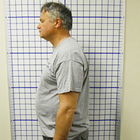
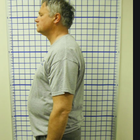
Full-side view
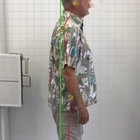
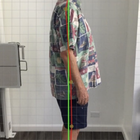
Full-side view
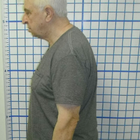

Full-side view


Full-side view
WHY US?
At Medijump, we're making medical easy. You can search, compare, discuss, and book your medical all in one place. We open the door to the best medical providers worldwide, saving you time and energy along the way, and it's all for FREE, no hidden fees, and no price markups guaranteed. So what are you waiting for?

Free

Best Price

Widest Selection

Risk-Free
What you need to know about Chiropractic Treatment in Vietnam

Chiropractic treatment is a type of procedure where a trained and licensed practitioner (chiropractor) uses their hands to help relieve problems with the joints, muscles, and bones. It is considered a type of complementary and alternative medicine (CAM), meaning it is not a conventional medical treatment. Sometimes, the procedure is used in conjunction with conventional medical treatment.
Chiropractic treatment is mainly used to help relieve painful muscles and joints, such as back pain, shoulder pain, neck pain, elbow pain, and pain from osteoarthritis. The goal of the treatment is to reduce nerve irritability, improve functionality, and restore or increase range of motion in the affected area. Detailed information about the specific chiropractic protocols in will be provided by the clinic.
What is the cost of Chiropractic Treatment?
One of the key factors that influence your decision to undertake Chiropractic Treatment in will likely be the cost. Prices can change depending on your condition, the number of sessions, and the chiropractor's charges. Session costs can be from 30 to hundreds of dollars (intouchchiropractic). Some insurances can cover chiropractic costs, so check your insurance before booking a clinic visit.
What does a Chiropractic Treatment Procedure Involve?
At the initial appointment, your symptoms will be assessed using lab tests or diagnostic imaging to determine if chiropractic treatment is suitable and what techniques are likely to help your specific condition.
During the procedure, you will be asked to lie down in a specific position on a chiropractic table. Then, the chiropractor may use different techniques to treat problems with joints and muscles, including:
-
Spinal manipulation or chiropractic adjustment (the chiropractor uses their hands to apply controlled, sudden force to the bones, muscles, and joints in and around the spine). Gradually moving your joints into different positions.
-
Short, sharp thrusting movements in the affected area.
-
Stretching or pulling your muscles in different directions.
Although some people experience small discomfort, chiropractic treatment is usually not painful.
How Long Should I Stay in Vietnam for a Chiropractic Treatment Procedure?
You can leave the clinic or hospital straight away after the treatment session. You should also be able to travel on the same day. However, it is recommended that you stay in Vietnam for at least a day before traveling to give your body a little time to fully recover. Since chiropractic treatment may require more than one session, you may need to attend six to 12 sessions. You have the choice to make multiple travels to Vietnam or stay for the whole treatment (around 6 weeks).
What's the Recovery Time for Chiropractic Treatment Procedures?
The recuperation period following a Chiropractic Treatment can greatly differ based on your unique health status and the treatment regimen suggested by your chiropractor. Some patients might notice immediate improvement post a single session, while others might require several sessions spanning weeks to discern notable enhancements. Post-procedure, you might experience a slight discomfort, rigidness, or fatigue.
What sort of Aftercare is Required for Chiropractic Treatment Procedures?
Chiropractic Treatment is an ongoing process; maintaining benefits and preventing symptom recurrence requires adhering to lifestyle, exercise, and dietary recommendations from your chiropractor. Follow-up visits are crucial for tracking progress, making adjustments, and providing continuous pain relief. Depending on your health, regular exercises or physiotherapy may also be recommended.
What's the Success Rate of Chiropractic Treatment Procedures?
Chiropractic Treatment has proven highly effective for conditions such as lower back pain, neck pain, and headaches. The treatment may also improve other conditions, such as osteoarthritis and fibromyalgia. Research suggests that spinal adjustments, in conjunction with lifestyle changes, can significantly improve overall wellness.
Most patients report high satisfaction after chiropractic treatments, with many experiencing notable pain relief. Nevertheless, the success of Chiropractic Treatment can hinge on factors like the specific health issue treated, the competence of the chiropractor, and the patient's adherence to post-treatment care recommendations.
Are there Alternatives to Chiropractic Treatment Procedures in Vietnam?
The alternative to chiropractic treatment depends on your specific condition, so it is best to talk to your doctor before undergoing anything. Alternative treatments that can provide comparable pain relief and improve physical functionality include physical therapy, acupuncture, massage therapy, and regular exercise.
What Should You Expect Before and After the Procedure
Before the Chiropractic Treatment, your chiropractor carries out an exhaustive assessment encompassing a physical check-up and if necessary, diagnostic imaging tests. Thereafter, your healthcare history and present health conditions are reviewed to formulate a bespoke treatment strategy.
After the procedure, transient discomfort in treated regions is typical but should subside within 24 hours. Most patients depart the clinic feeling improved; the pain should be relieved, nerve irritability should be reduced, the functionality should be improved, and the range of motion in the affected area should be restored. In succeeding appointments, your chiropractor will monitor progress and adjust the treatment scheme as required.
What are the Potential Risks of Chiropractic Treatment?
While Chiropractic Treatment is safe when performed by a trained chiropractor, like any medical treatment, it does carry some potential risks. It's important to note that the majority of patients experience no serious adverse effects and find their treatment comfortable.
There are, various minor side effects and some rare but serious risks to chiropractic treatment, including:
-
Pains and aches
-
Tiredness
-
Stiffness
-
Stroke
-
Herniated or slipped disk
-
Spinal cord injury.
Whilst the information presented here has been accurately sourced and verified by a medical professional for its accuracy, it is still advised to consult with your doctor before pursuing a medical treatment at one of the listed medical providers
No Time?
Tell us what you're looking for and we'll reachout to the top clinics all at once
Enquire Now

Popular Procedures in Vietnam
Prices Start From $400

Prices Start From $21

Recommended Medical Centers in Vietnam for Chiropractic Treatment

- Interpreter services
- Translation service
- Religious facilities
- Medical records transfer
- Medical travel insurance
- Health insurance coordination
- TV in the room
- Safe in the room
- Phone in the room
- Private rooms for patients available

- Interpreter services
- Translation service
- Religious facilities
- Medical records transfer
- Medical travel insurance
- Health insurance coordination
- TV in the room
- Safe in the room
- Phone in the room
- Private rooms for patients available

- Interpreter services
- Translation service
- Religious facilities
- Medical records transfer
- Medical travel insurance
- Health insurance coordination
- TV in the room
- Safe in the room
- Phone in the room
- Private rooms for patients available

- Interpreter services
- Translation service
- Religious facilities
- Medical records transfer
- Medical travel insurance
- Health insurance coordination
- TV in the room
- Safe in the room
- Phone in the room
- Private rooms for patients available
Chiropractic Treatment in and around Vietnam
About Vietnam
Situated at the extreme east of the Indochina Peninsula, Vietnam is a country that exhibits profound cultural richness and captivating landscapes. It holds the distinction of being the world's 15th most populous country, housing over 94 million residents scattered across its diverse geographical expanse. Despite grappling with issues like poverty and corruption, Vietnam's impressive economic performance cannot be overlooked. Notably, the country boasts a commendable GDP growth rate and is celebrated as one of the fastest-growing economies globally.
This country is well-known around the globe for its breathtaking natural beauty. It's also recognized for its energetic, larger-than-life cities that are always buzzing with activity. Furthermore, its culture is intricate and assorted, attracting millions who appreciate rich customs and traditions. In 2018, this place was a magnet for tourists, drawing in over 15 million visitors who were eager to immerse themselves in its unique way of life.
Broadly celebrated for its splendid scenic landscapes, there's an undeniable charm this country possesses. The vivacious megacities are a thrilling fusion of noise, colors, and life that leaves an impression on all who stroll through them. The cultural mosaic of this land is complex, and varied, presenting evidence of a fascinating history shared through countless generations. The year 2018 saw floods of tourists - well in excess of 15 million - come to explore, each leaving with their own tale of discovery within its borders.
The rapid development of Vietnam has made it into the next medical tourism hub in Southeast Asia. Now, medical tourists consider the country as their potential medical destination. Many new medical centers have sprung up and welcomed thousands of patients to relax and enjoy their treatment. The country offers a wide range of cost-effective medical treatment, well-trained doctors, and professional equipment. The country focuses on promoting medical tourism to neighboring markets such as Laos and Cambodia.
Popular Parts of Vietnam
- Ho Chi Minh, formerly Saigon, is the most populous city in Vietnam. It is the financial center and home to the largest stock exchange in the country. Tourists coming to the city can enjoy its many tourist spots such as shopping in the Ben Thanh Market, viewing the city from Saigon Skydeck, discovering the city’s history from The War Remnants Museum, or learning the culture of Jade Emperor Pagoda. Other than the attractions, the city is also famous for its traditional food, including pho and pork rolls.
- Hanoi is the capital of Vietnam and the country’s major metropolitan and political center. Tourists will find many well-preserved colonial buildings, museums, and pagodas. As one of the most ancient capitals in the world, most tourists will be delighted to explore the city’s historic Old Quarter, spend a beautiful day in Hoan Kiem Lake, or visit the Temple of Literature.
- Hoi An invites tourists to experience a slow-paced, relaxing lifestyle. The city’s Old Town has successfully preserved Japanese merchant houses and Chinese temples. To get a glimpse of the city, many tourists will opt for a bicycle tour. The city also offers a unique farming and fishing experience for its visitors. Off the coast of the city, tourists will be overjoyed to find a diving paradise with hundreds of different coral and fish.
- Nha Trang is a coastal city on the South Central Coast of the country. Tourists usually come to this city for its stunning white sandy beaches and scuba diving. In addition to the beautiful beaches, Nha Trang Bay is considered to be one of the world’s most beautiful bays. The city is also home to the remnants of the Champa Kingdom, gothic-style Catholic churches, and many Buddhist temples.
- Da Nang is located on the coast of the South China Sea, making it the most important port city of Vietnam. The city continues to evolve each year, with modern hotels and restaurants being developed all around it. It is the tourist capital of South Central Vietnam. Tourists visit the city to enjoy its tranquil beaches with crystal clear waters, beautiful ancient pagodas, interesting French colonial buildings, and green national parks.
Weather and Climate in Vietnam
Vietnam, situated uniquely on the map, experiences differing climates in its varied regions. If you travel south, you'll find a tropical monsoon climate. This climate type typically comes with two main seasons - the wet season and the dry season.
Straying north, however, you'll encounter a different story altogether. Here, the climate is categorized as monsoonal but it's accompanied by four clear-cut seasons - spring, summer, autumn, and winter. So, regardless of the time of year, there's a high chance you'll experience a unique slice of Vietnamese weather, depending entirely on which part of the country you've set foot in.
- The south experiences wet and dry season and the wet season lasts from September to December. There is more rainfall between September and November. The dry season starts in January and ends in August and the average annual temperature is around 26 °C. Some cities such as Da Nang are prone to typhoons during the wet season.
- In the north, spring starts in February characterized by some rain and cold temperature. The end of April is the start of summer, with intense sunshine and sometimes even a heatwave. The average temperature during Summer is 27.5 °C but it can feel a lot hotter. Autumn starts in September and ends in November. Autumn has the best weather, with a lot of sunshine and calm wind. From December to January is Winter and it is generally cold with an average temperature of 17 °C which can drop as low as 7 °C.
Getting Around in Vietnam
There are numerous airports in Vietnam that connect the major cities. However, there are three major international airports where international visitors usually arrive at, Ho Chi Minh, Hanoi, and Da Nang. Most international flights will arrive at Tan Son Nhat International Airport which serves domestic and international flights to and from major cities in Asia, Europe, and Australia. In terms of capacity, the biggest airport in the country is the Noi Bai International Airport in Hanoi.
The airport is a hub for both local and global travel. It houses two terminals within its boundaries. Terminal 1 is tasked with the management of domestic flights, servicing those traveling within the country's borders. On the other hand, Terminal 2 oversees international flight operations, connecting this airport to numerous cities across Asia and Europe. Affordable airlines, including the likes of Jetstar Pacific and VietJet Air, schedule flights departing from and arriving at both Tan Son Nhat and Noi Bai airports - a testament to the airport's reach and convenience to travelers with varying budget needs.
Tourists do have a few travel options to get around Vietnam. The country is served by trains running from Ho Chi Minh City to Hanoi and it stops in many of the popular areas such as Da Nang and Nha Trang. Buses are a great option for tourists to get around the country and the buses are privately operated buses called “open tour” buses. There is also a national bus system, but they are generally not as comfortable as the private buses.
Taxis are available in most cities and can be hailed directly from the streets or via a phone call. The fare usually starts at VND 10,000 to VND 12,000. If you need to be quick, try the motorcycle taxis known as Xe Om. You will need to negotiate the price but they can be found in most parts of the cities. Cyclo (similar to trishaw) is also available for short-distance travel within a city. For easier travel, opt for Grab Motorbike, an online hailing app similar to Uber.
Tourist Visas in Vietnam
- Citizens of 24 countries, including Singapore, Thailand, Russia, and Japan, can enter and stay in Vietnam for up to 90 days without a visa.
- Citizens of 81 countries, including the United States, the European Union, and Canada, can apply for an e-visa. An e-visa is a single-entry visa that allows the holder to stay in Vietnam for up to 30 days.
- Citizens of all other countries need to apply for a visa at a Vietnamese embassy or consulate.
How to apply for an e-visa:
- To apply for an e-visa, you will need to create an account on the Vietnam e-Visa website and complete an online application form. You will also need to upload a digital photo of yourself and a scan of your passport.
- The e-visa fee is USD 25.
- Once your application is approved, you will receive an e-visa by email. The e-visa must be printed out and presented to immigration officials upon arrival in Vietnam.
Additional information:
- All visitors to Vietnam must have a passport valid for at least six months beyond their intended date of departure from Vietnam.
- Visitors who obtain an e-visa must have a valid passport and a digital photo.
- Visitors who apply for a visa at a Vietnamese embassy or consulate may also need to provide additional documentation, such as a proof of onward travel or a letter of invitation.
Additional Information
- Local Currency: The official currency is the Vietnamese Dong and 1 USD converts to VND 24,455.
- Money & Payments: ATMs are widely available throughout the country. Credit and debit cards are accepted in many hotels but most restaurants and shops still only accept cash. Tipping is generally not expected but will be appreciated.
- Local Language: Vietnamese is the local language. English is not widely spoken, but if you are staying in popular tourist areas, there will be people who can speak some English.
- Local Culture and Religion: Most of the population follows the Vietnamese folk religion. Buddhism, Christianity, Hoahaoism, Islam, and Hinduism are also freely practiced.
- Public Holidays: The country celebrates major religious and national holidays such as New Year’s Day, Saigon Liberation Day, and Vietnam Traditional Lunar New Year.
Popular Searches
- Plastic Surgery in Thailand
- Dental Implants in Thailand
- Hair Transplant in Thailand
- Breast Augmentation Thailand
- Gastric Sleeve in Thailand
- Gender Reassignment Surgery in Thailand
- Laser Hair Removal in Bangkok
- Botox in Bangkok
- Dermatology in Bangkok
- Breast Augmentation in Bangkok
- Coolsculpting in Bangkok
- Veneers in Turkey
- Hair Transplant in Turkey
- Rhinoplasty in Turkey
- Stem Cell Therapy in Mexico
- Rhinoplasty in Mexico
- Liposuction in Mexico
- Coolsculpting in Tijuana
- Rhinoplasty in Korea
- Scar Removal in Korea
- Gastric Sleeve in Turkey
- Bone Marrow Transplant in India
- Invisalign in Malaysia
- Plastic Surgery in the Dominican Republic
- Tummy Tuck in the Dominican Republic
- Plastic and Cosmetic Surgery in Poland
- Rhinoplasty in Poland
- Hair Implant in Poland
- Dental Implants in Poland
- IVF in Turkey

